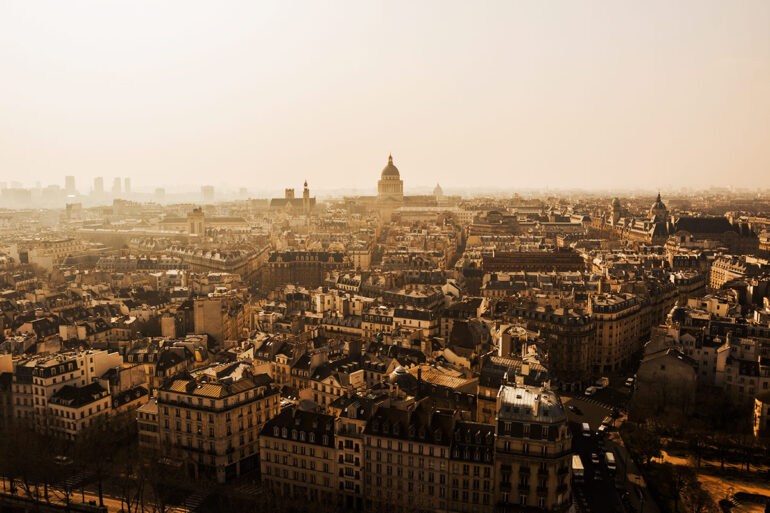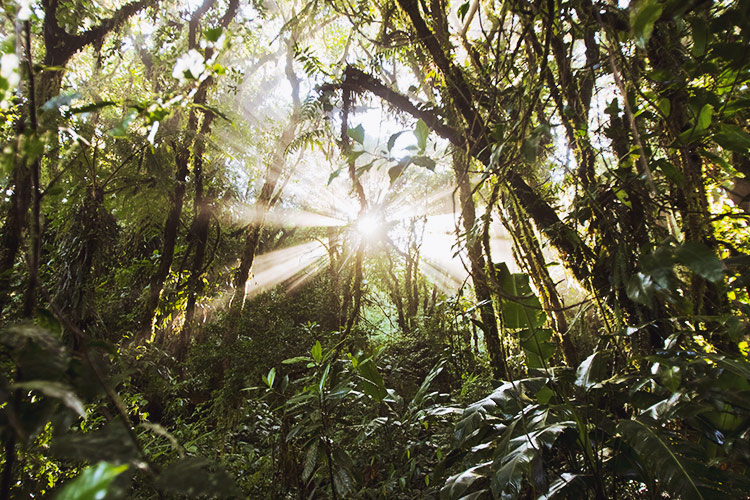We may earn a commission when you purchase through affiliate links. Learn more.
A great writer can weave words into a scene that makes you long for a place you’ve never even been to. While writers use words to craft a sense of mood and atmosphere that conjures up feelings, this kind of storytelling and use of atmosphere isn’t their exclusive domain — great visual artists like photographers know that creating images that make people feel something is a critical part of their job as well.
When you think back to your most vivid memories of the places you’ve been, what are the things you remember most? Usually, it’s things that made your senses tingle — maybe the rich, earthy scent of an old growth forest or the way the warm light of the golden hour illuminated the rising cloud of pungent steam from a street vendor’s stall. Maybe it’s the vibrant colors reflecting on a wet street after the rain or the cool blue tones of a foggy evening along a rocky coastline. As photographers, we can’t use words to describe the atmosphere of a place, but we can convey a sense of atmosphere by being mindful of the elements of a scene that stirred our senses. Whether you’re a portrait photographer, a landscape photographer, or someone who photographs everything, the more attention you pay to your surroundings, the better your images will become.
1. Make your Photography a Practice in Mindfulness
There’s a lot to think about when you’re taking a photo like composition and exposure, and it’s very easy to focus in on just the basics like identifying the subject and then framing it in an aesthetically pleasing way. You might end up with a reasonably good photograph that certainly checks all the boxes when it comes to composition, but somehow doesn’t capture the imagination of viewers. Technical perfection often doesn’t translate into creative perfection.
Before you take a photo, spend some time (even just a few moments) contemplating the entirety of the scene. Take a mental note, or to help yourself practice a good habit you can even try writing down your notes, of the elements in the scene like light, movement, texture, color, and space/depth. In the real world, the subject of your photo, whether a small animal, person, or even a mountain exists in a three dimensional space and interacts with its environment.
 2. Be aware of the light and where it’s coming from
2. Be aware of the light and where it’s coming from
Creative photography is all about the light and how you use it to your advantage to create an image that is as compelling as the scene you witnessed with your own eyes. When taking a picture, you’ll want to be very conscious of the nature of the light, where it’s coming from, and how it’s interacting with your scene.
3. There’s Beauty in Mystery
New photographers often approach both the initial photography of a scene and the subsequent post-processing with the idea that every detail should be revealed, with nothing lost to the shadows and highlights. Recovering details in both shadows and highlights certainly has its place, but when you’re trying to create an image that evokes deeper feelings and transports the viewer into the scene, you’ll want to consider that real life often doesn’t reveal all of the details.
Have you found yourself squinting into the sun on a blindingly bright summer day or straining to see into the shadowy depths of a thick forest in the twilight hours? These experiences make you feel something in the moment, and trying to capture them and even accentuate them in your images can result in images that have a lasting impact, rather than just a brief, fleeting appeal.
4. Control the Depth of your Photo
I mentioned earlier that your subject exists in a three dimensional space — every scene has a foreground, a middleground where the subject is, and a background. As a photographer, you’ll want to remain aware of how your subject fits into the environment: is it the obvious subject, or is it surrounded by distractions? Part of crafting the atmosphere of a photo is knowing how to draw attention to your subject and minimize distractions.
One of the most effective methods is to use a shallow depth of field to isolate a subject from a distracting foreground or background. To achieve a shallow depth of field, you’ll want to keep plenty of distance between your subject and the background and use a lens with a fast aperture like the Canon EF 50mm f/1.8 STM lens or Nikon AF-S DX NIKKOR 35mm f/1.8G lens.
 5. Be Aware of Colors
5. Be Aware of Colors
Black and white photography can certainly pack a punch when it comes to atmosphere, but if you are shooting in color, you’ll want to be very aware of all the colors and tones in your scene. Depending upon the time of day, the light itself will take on very different tones — in the early moments of dawn and in the dwindling twilight of dusk, the light is very blue, while during the golden hour before sunset and after sunrise, the world is bathed in warm, golden light. Even the natural surroundings can affect the color of the light; light filtered through a thick, misty rainforest canopy takes on a rich, warm green tone.
Color has a powerful relationship with mood and emotion, but with digital photography, it’s very easy for that original vibrancy and tone to be modified, simply by adjusting the white balance and saturation of certain colors. The ability to modify the entire palette of an image can be used well to enhance the sense of atmosphere, but it’s so important not to overdo it and to find the right balance to avoid a scene looking fake.



 2. Be aware of the light and where it’s coming from
2. Be aware of the light and where it’s coming from 5. Be Aware of Colors
5. Be Aware of Colors